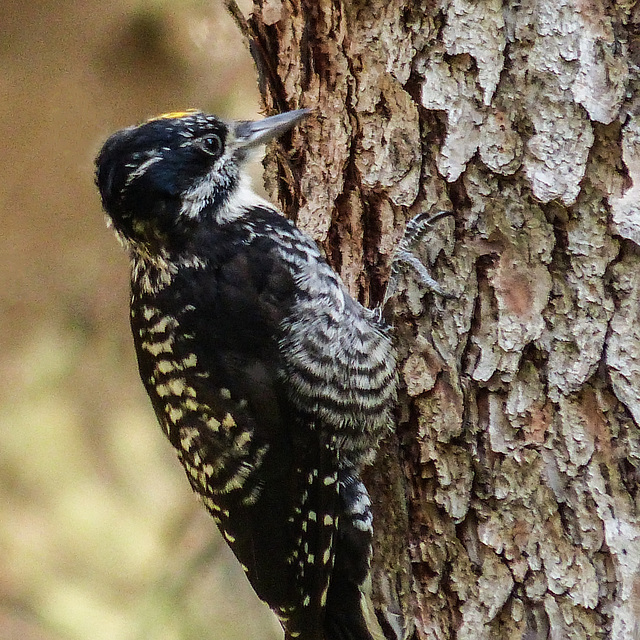Adult and juvenile Three-toed Woodpeckers
Three-toed Woodpecker
Three-toed Woodpecker
Rare American Three-toed Woodpecker
American Three-toed Woodpecker
Rare (in Alberta) American Three-toed Woodpecker
American Three-toed Woodpecker male
American Three-toed Woodpecker
American Three-toed Woodpecker
Three-toed Woodpecker
Uncommon American Three-toed Woodpecker
American Three-toed Woodpecker
Three-toed Woodpecker
American Three-toed Woodpecker / Picoides dorsalis
American Three-toed Woodpecker
American Three-toed Woodpecker
See also...
Keywords
Authorizations, license
-
Visible by: Everyone -
All rights reserved
-
130 visits
American Three-toed Woodpecker


It started to rain when I was driving to Brown-Lowery Provincial Park on 17 August 2013. It had cleared up by the time I got there, but the light was not good within the forest. I'm so glad I didn't turn around and head for home when the rain came, though, as I ended up seeing a group of three of these rare American Three-toed Woodpeckers. Not the best photos, but with some brightening, I think a few are fit to use. One of the three was definitely a juvenile, as every once in a while, it made a louder sound and the adult that was usually nearby would feed it. I was also lucky enough to see a pair of Ruffed Grouse - oh, and a few mushrooms : ) There were several cars parked in the parking lot when I arrived, so I felt brave enough to go just a little further into the park than I normally go. So glad I did! These are rare birds here, so I feel very lucky to have seen this one and any others in the past.
"Woodpeckers, piculets and wrynecks all possess zygodactyl feet. Zygodactyl feet consist of four toes, the first (hallux) and the fourth facing backward and the second and third facing forward. This foot arrangement is good for grasping the limbs and trunks of trees. Members of this family can walk vertically up a tree trunk, which is beneficial for activities such as foraging for food or nest excavation." From Wikipedia. This tells why the American Three-toed Woodpecker is different : ) The Black-backed Woodpecker, rare here, also only has three toes.
"In North America, data suggest that its populations may be declining, while long-term data from northern Europe leave little doubt that populations in Finland and Sweden are indeed declining." From birdsofalberta.com.
"Woodpeckers, piculets and wrynecks all possess zygodactyl feet. Zygodactyl feet consist of four toes, the first (hallux) and the fourth facing backward and the second and third facing forward. This foot arrangement is good for grasping the limbs and trunks of trees. Members of this family can walk vertically up a tree trunk, which is beneficial for activities such as foraging for food or nest excavation." From Wikipedia. This tells why the American Three-toed Woodpecker is different : ) The Black-backed Woodpecker, rare here, also only has three toes.
"In North America, data suggest that its populations may be declining, while long-term data from northern Europe leave little doubt that populations in Finland and Sweden are indeed declining." From birdsofalberta.com.
- Keyboard shortcuts:
Jump to top
RSS feed- Latest comments - Subscribe to the comment feeds of this photo
- ipernity © 2007-2024
- Help & Contact
|
Club news
|
About ipernity
|
History |
ipernity Club & Prices |
Guide of good conduct
Donate | Group guidelines | Privacy policy | Terms of use | Statutes | In memoria -
Facebook
Twitter

Sign-in to write a comment.